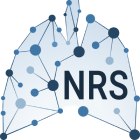A transcriptome-driven analysis of epithelial brushings and bronchial biopsies to define asthma phenotypes in U-BIOPRED
Unbiased clustering of asthma using clinical features has derived phenotypes of limited pathobiological relevance. It is not known whether semi-biased clustering on transcriptomic data will provide additional information on underlying asthma biology.
The authors show that semi-biased clustering of transcriptomic profiles from asthmatic airway samples produces biologically relevant clusters that have implications for directed or personalized therapy. They report subgroups of eosinophilic asthma driven by T-helper Type 2 cells and corticosteroid insensitivity signatures that featured either high submucosal eosinophils or sputum eosinophils. An inference scheme using currently-available inflammatory biomarkers can be used to predict the subtypes of gene expression.

